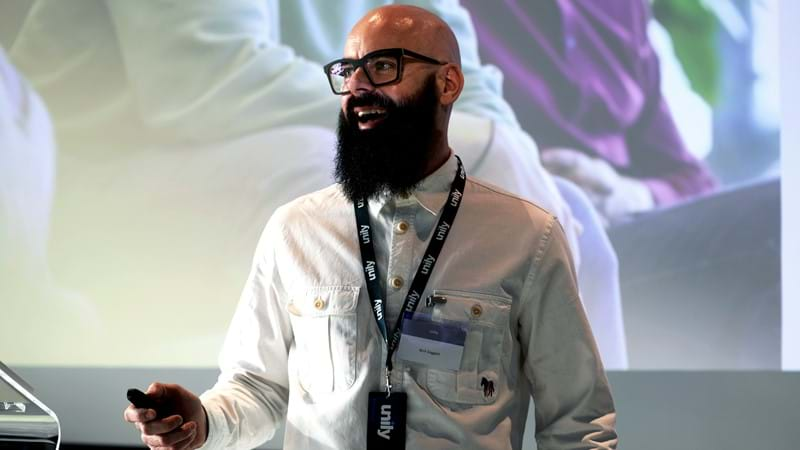5 intranet platform driven culture changes you need for your next normal
COVID-19 continues to impact nearly every element of our daily lives, and workplace expectations are no exception. If you're looking to build employee resilience and social capital, your culture must adapt to correspond with your team's evolving behavior changes.

Reflecting on employee experience during the pandemic
From 4x higher profits to 40% lower turnover rates, enterprises that excel in employee experience have an undeniable advantage. Although cultivating an engaged workforce continues to prove challenging, many employers succeeded in looking out for their staff during the pandemic's height. 80% of employees indicate that their leadership has protected their health and safety during the COVID-19 crisis.
As we look to the future, leaders must finetune their employee engagement strategies to keep pace with their workforce's evolving expectations. The next phase of your enterprise's post-pandemic recovery will require ongoing insight into your employee's changing needs and preferences and what they are looking for when it comes to workplace culture.
5 essential culture changes for your next normal
As you shift gears and prepare for your next normal, you will need a more sophisticated approach to managing workplace experience. The five cultural changes every leader should have on their radar include:
#1. Build your employees' trust
Your employees want to feel confident that their organization is looking out for their safety and supporting them throughout every phase of the pandemic. Only 1 in 3 American workers believe that their company has trusted leaders and managers that will help them navigate the crisis.
To earn your employees’ confidence, leaders must give everyone the opportunity to weigh in and share their concerns. Build two-way dialogues through social networking tools, pulse surveys, and virtual townhall meetings and encourage employees to express their opinions. Keep your workforce informed on open-ended changes and turn to trusted leaders to communicate these updates transparently.
As spoken about by trust expert, Rachel Botsman, touch releases oxytocin, which enhances our ability to trust. Replicating this in remote scenarios is not easy. However, a feeling of affiliation also releases oxytocin. To bring your people closer, you will need to be more open in your comms, showing a more vulnerable and compassionate side that people can relate to. This is where access to leadership via video spotlights and bustling social channels on your intranet can help to break barriers and bridge the gap between remote work and office life.

#2. Adopt a personalized approach
Your employees will react differently to their new, pandemic affected, ways of working. Some may be thriving in a remote environment, while others will struggle to juggle both personal and professional demands. Consequently, you need a tailored approach to managing employee experience that is driven by data and analytics.
Take a page from your marketing team's personalization tactics for consumers by segmenting your employee engagement strategy. Your employees will be facing various challenges and priorities depending on their role and the stage of life they are in. For example, millennials view caregiving as the top obstacle for remote work, while inadequate workspaces are generation Z's most prevalent hindrance. A tailored approach will make every employee feel welcome and valued.
#3. Prioritize inclusivity
As you prepare to transition your workforce to their next normal, your employees will encounter new responsibilities and challenges. To inspire your teams to face these changes head-on, you need an integrated culture that emphasizes individualism and accessibility.
If you're looking to make your workplace culture more inclusive, learn as much as you can about the challenges each of your employees is facing. Take advantage of qualitative measures like interviews and surveys on your intranet to uncover deep insights on your workforce's experiences and expectations.
Encourage managers to model behavior that empowers everyone to openly share their input and express their thoughts without fear of negative consequences. When employees voice concerns, work with your HR department to brainstorm new solutions. Flexible hours is one example of a change that can help workers who are juggling conflicting responsibilities.
#4. See the bigger picture
Even before COVID-19, purpose ranked within the top three factors that employees look for in an organization. The pandemic has only heightened every organization's need to connect their work back to a greater good. When your employees have a sense of purpose, they are better equipped to navigate ongoing uncertainty and remain engaged in their daily tasks.
It falls on your senior leadership team to bring your organization's missions and values to life. Encourage managers to spotlight colleagues who are making a difference and share their stories on your intranet via blog posts and homepage takeovers. Social impact schemes are an excellent opportunity to unite your entire workforce under a common goal that embodies your organization’s ethos. Build buzz around your initiative by publicizing it on your intranet, creating dedicated discussion forums, and showcasing internal ambassadors.

#5. Focus on relationship building
Since nearly half of all employees will work remotely following the pandemic, relationship building should be at the top of your priority list. While the majority of workers find virtual team collaboration to be successful, only slightly more than 50% feel connected to their remote colleagues.
In the past, leaders often turned to office happy hours and in-person team building activities to bring employees together. While some of your workers are likely returning to the office, networking opportunities must be accessible to both employees who are remote and on-site. Frequently, the best team building options come from your employees so encourage everyone to share ideas like virtual trivia nights and weekly catchups.
Are you ready to adapt your culture for your next normal?
Even the most compelling cultures must evolve to remain relevant to employee circumstances and preferences. If you're looking to take advantage of an intranet to keep your employees connected and inspired as they navigate their next normal, get in touch with our digital workplace experts.












